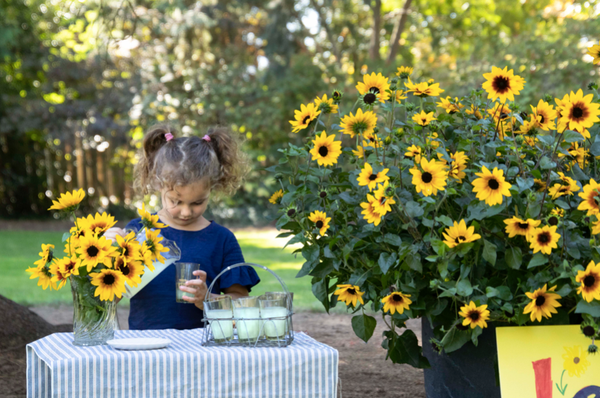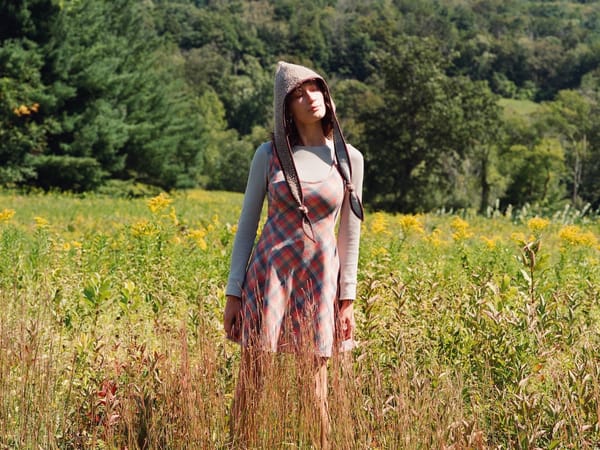Moment By Moment In The Garden
Garden writer Madaline Sparks helps us plan for (and appreciate) the momentary glories of the garden.

Garden writer Madaline Sparks helps us plan for (and appreciate) the momentary glories of the garden.

‘SunBelievable’ Brown-Eyed Girl Helianthus. (Photo courtesy of Monrovia Growers)
When we look at pictures in garden magazines and catalogs (what I call “garden porn”) we see each of those stunning flowers or spectacular gardens at one specific moment, captured by a shutter click. I am here to tell you to take those images with a grain of salt. It’s not that they aren’t real. Aside from photoshop techniques that may have been used to enhance them, they are very real. But they are momentary. Gardens don’t freeze in that perfect state and remain ideal until the first frost. The challenge of the art of fine gardening is to string together a series of many moments that are visually profound, if fleeting, from spring to fall.
Most perennials bloom for only about two weeks a year. Some, called long-blooming, can flower as long one to three months. Of course, that all depends on weather. How many times have I shed tears over my blooming peonies, a brief enough moment as it is, being pummeled by an intense downpour. I want to share with you three take-away tips regarding this design conundrum.

Dwarf Zinnia ‘Profusion’ Deep Apricot
Tip 1: Plant a combination of these two categories if you want continuous bloom. Plan to have the “comets” that come and go quickly, as well as the stalwarts that linger longer. There are many lists available in books and online of expected length of flowering time for plants.
Tip 2: Integrating perennials and small shrubs that are predominantly about foliage color and texture (rather than flowers) mitigates the gaps when flowers are MIA. These plants create a foundation that keeps the garden interesting all season. One of my favorite plants has been chosen as the Perennial Plant of the Year for 2020, Aralia cordata ‘Sun King’. The leaves are highly textural, thanks to their compound structure. The chartreuse color complements all other colors in the garden. Clusters of small white flowers appear in mid-or late summer, attracting bees and other pollinators. Blackberries ripen after the bloom. These are inedible to humans but loved by birds. How to grow it: Site ‘Sun King’ in part shade and rich-to-average soil. Its best leaf color is prompted by 2 to 4 hours of sun each day (preferably in the morning). It requires even moisture and will not tolerate drought.
Tip 3: Though some gardeners poo-poo mixed borders, I am a big proponent of using some annuals with perennials to keep the show going and provide consistent interest. Even though you have to replace them each year, these workhorses more than justify their cost. Low-maintenance dwarf zinnias, a frequent go-to of mine, are excellent fillers or front-of-border plants and, once they start to bloom, perform until frost with almost no deadheading, creating 15-inch high mounds of profuse flowers. They come in white and lots of hot colors (orange, cherry, red, yellow, salmon, etc.) and can be found under series names like ‘Profusion’, ‘Magellan’ and ‘Zahara.’

Aralia cordata ‘Sun King’, Japanese aralia or Spikenard. (Photo courtesy Walters Gardens)
Another plant, being introduced by Monrovia Growers this spring, is ‘SunBelievable’™ Brown-Eyed Girl Helianthus, an annual sunflower that produces literally hundreds of flowers over the season. Golden yellow petals are tinged with dark red with reddish stems. I trialed one last year in a container and was blown away with how prolific the bloom was and how easy it was to grow. It’s shrubby and compact to 24” tall and 39” wide. It's perfect for sunny mid-border gaps and also excellent in pots. Like all annuals, it needs an occasional feeding and regular hydration to fulfill expectations.
Commit your magic garden moments to memory (or your phone) and, rather than mourn their quick passing, savor those you have orchestrated, delight in the many that happen serendipitously and get ready to enjoy the next moment and the next and...








